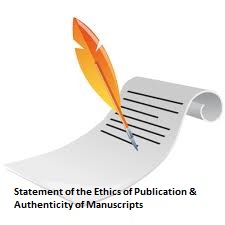PENETAPAN KADAR AMILOSA DAN PROTEIN PADA BERAS SOLOK JENIS ANAK DARO DAN SOKAN YANG DITANAM DENGAN SISTEM PERTANIAN ORGANIK DAN SISTEM PERTANIAN KONVENSIONAL
DOI:
https://doi.org/10.36341/jops.v1i2.491Keywords:
amylose, protein, anak daro rice, sokan rice, organicAbstract
The organic farming system is a holistic agricultural production management system for improving and developing agro-ecosystem health, including biodiversity, biological cycles, and soil biological activities. Organic farming systems use natural fertilizers and pesticides, while conventional farming systems still use chemical fertilizers and pesticides. Environmental conditions are expected to affect the chemical content of rice. One of the main chemical constituents in rice is amylose and protein. This research is a laboratory experimental study that aims to see the amylose and protein content of Solok rice types sokan and anak daro which grown with organic farming system and conventional farming system. From the result of the research, equation of calibration curve amylose is Y = 0,0246X + 0,0146 with correlation coefficient (r) = 0,9984. Amylose content of Solok rice type of anak daro organic 28,90%, anak daro conventional 28,04%, sokan organic 30,32% and sokan conventional 30,94%. Protein content of Solok rice type of anak daro organic 8,79%, anak daro conventional 8,15%, sokan organic 8,50% and sokan conventional 8,25%. T value of each group is smaller than the T table value, it can be concluded that the result is not significantly different.
Downloads
Downloads
Published
How to Cite
Issue
Section
License
1. Copyright of all journal manuscripts is held by the JOPS (Journal Of Pharmacy and Science)
2. Formal legal provisions to access digital articles of electronic journal are subject to the provision of the Creative Commons Attribution-ShareAlike license (CC BY-NC-SA), which means that JOPS (Journal Of Pharmacy and Science) is rightful to keep, transfer media/format, manage in the form of databases, maintain, and publish articles.
3. Published manuscripts both printed and electronic are open access for educational, research, and library purposes. Additiponally, the editorial board is not responsible for any violations of copyright law.
licensed under a Creative Commons Attribution-ShareAlike 4.0 International License.










